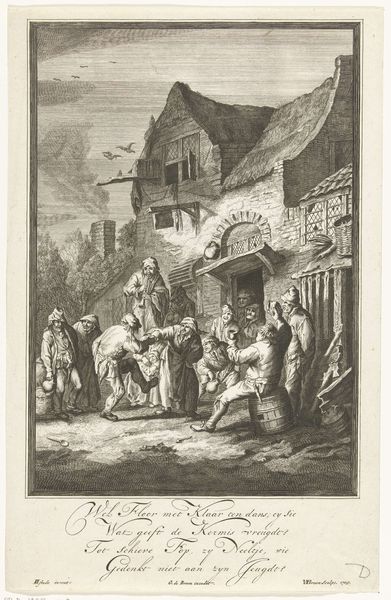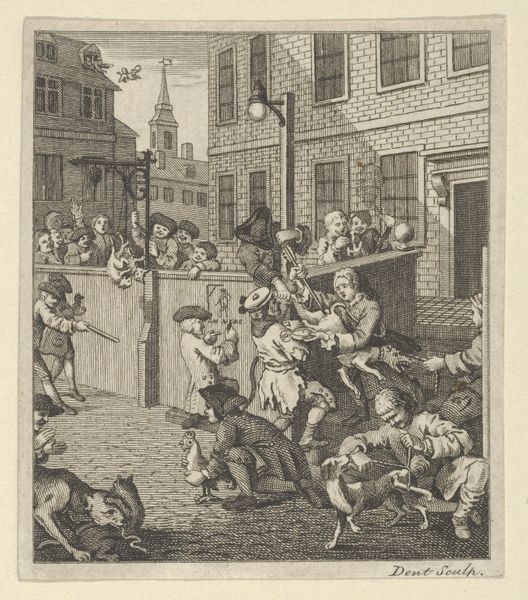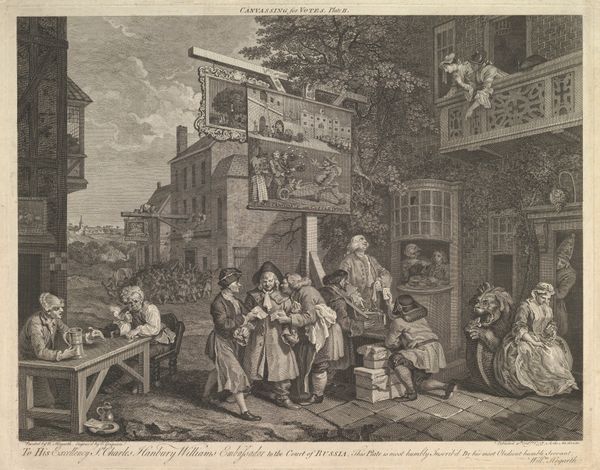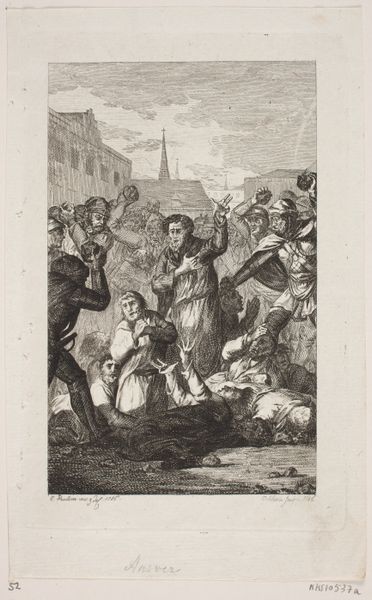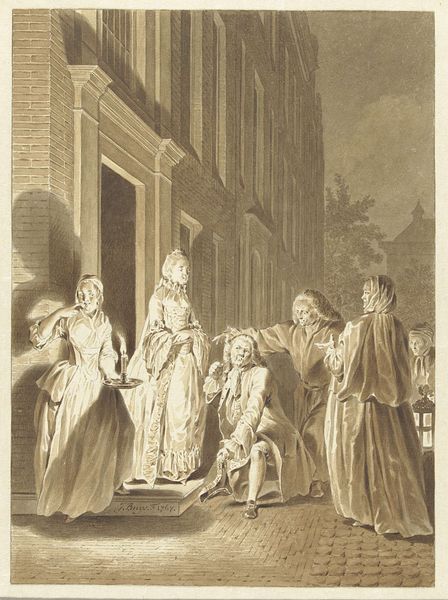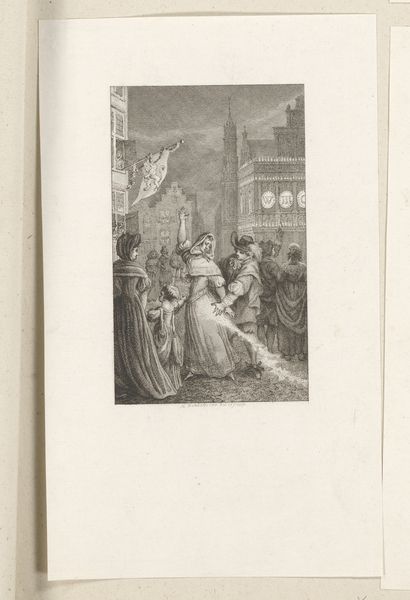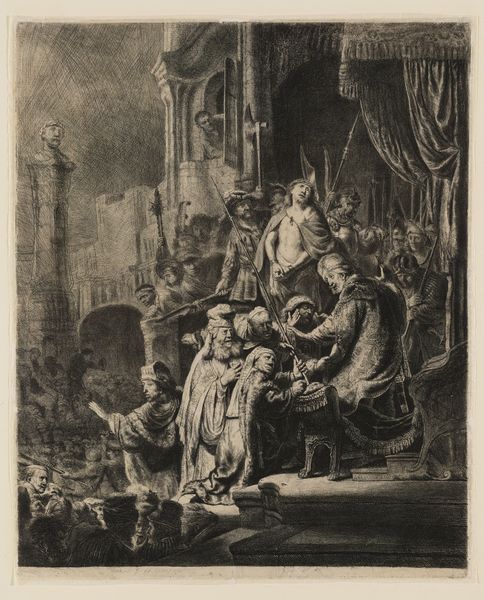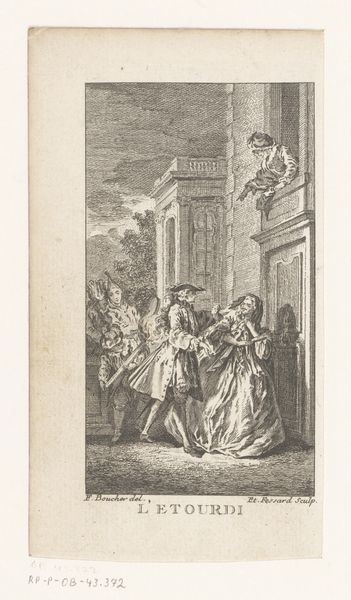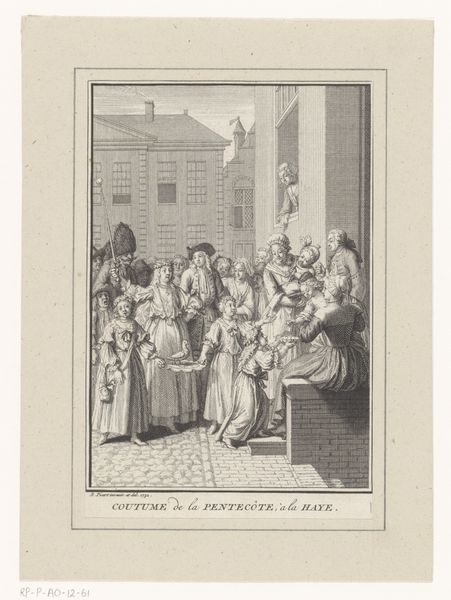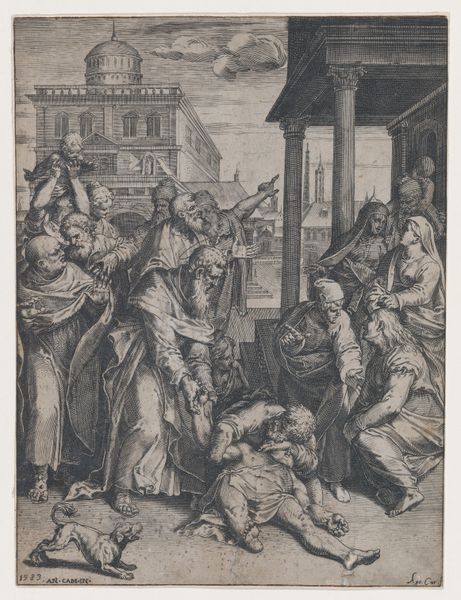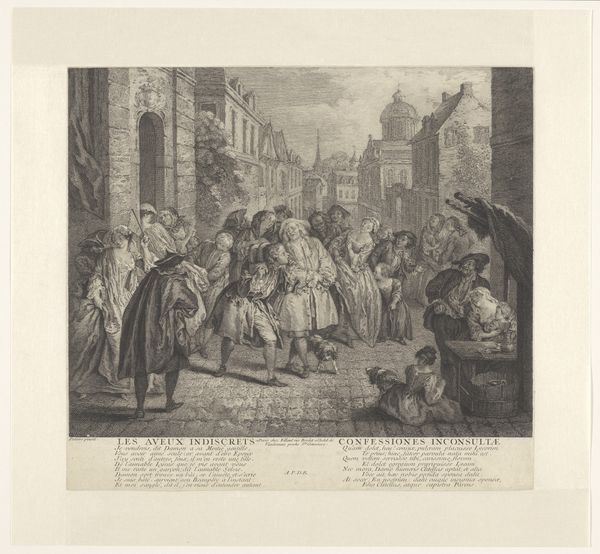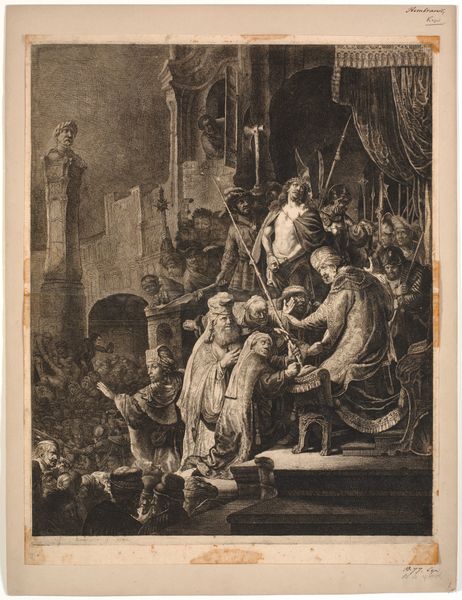
drawing, print, engraving
#
drawing
#
narrative-art
#
baroque
# print
#
old engraving style
#
cityscape
#
genre-painting
#
history-painting
#
engraving
Dimensions: plate: 19 7/16 x 15 3/4 in. (49.3 x 40 cm)
Copyright: Public Domain
William Hogarth’s ‘Morning’ is an engraving, meaning he cut lines into a metal plate, inked it, and pressed it onto paper, probably sometime in the 1730s. Look closely and you'll see the precise labor involved. Each line meticulously carved, demanding immense skill and patience. The stark contrast between light and shadow, achieved through dense networks of fine lines, heightens the scene's dramatic tension. Hogarth, a master of social commentary, uses this printmaking process to highlight the stark class divisions of 18th-century London. The wealthy woman, oblivious to the working poor huddled around a fire, embodies the economic disparities of the time. The printmaking process itself, while capable of producing multiple images, also mirrors the industrializing world where some profit, while others struggle. By focusing on the material reality of engraving and its ability to reproduce images widely, Hogarth democratized art, making it accessible to a broader audience and sparking critical conversations about society. The very act of making and distributing these prints challenged traditional notions of art as a luxury, blurring the lines between craft, commerce, and social critique.
Comments
No comments
Be the first to comment and join the conversation on the ultimate creative platform.
